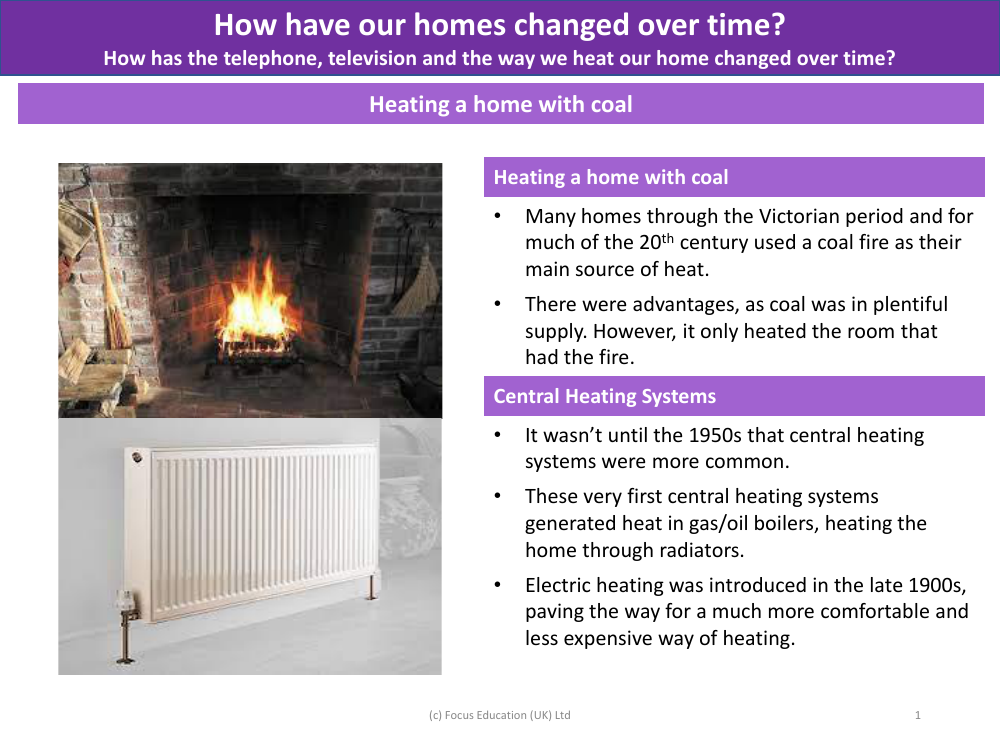Changes to how we heat out homes - Info sheet

History Resource Description
Throughout history, the methods of heating homes in Britain have seen significant changes, reflecting advancements in technology and a shift towards more efficient and sustainable energy sources. During the Victorian era and well into the 20th century, coal fires were the primary source of warmth in many households. The advantage of coal was its abundant availability, but the downside was that it only heated the room in which the fire was located, leaving other areas of the home cold.
The introduction of central heating systems in the 1950s marked a turning point in home heating. These early systems relied on gas or oil boilers to generate heat, which was then distributed throughout the home via radiators. By the late 1900s, electric heating emerged, offering a more comfortable and cost-effective heating solution. In the 21st century, underfloor heating, a technology once used by the Romans, has made a comeback in modern home construction, providing an even and efficient way to heat living spaces. Additionally, with growing environmental awareness, solar panels have surged in popularity as a renewable energy source, becoming a common sight on homes across the country.



